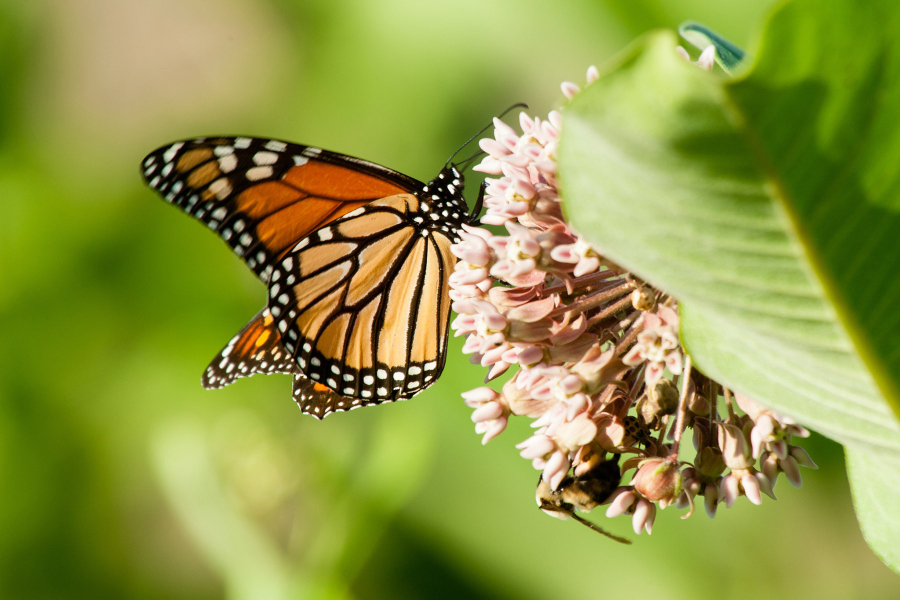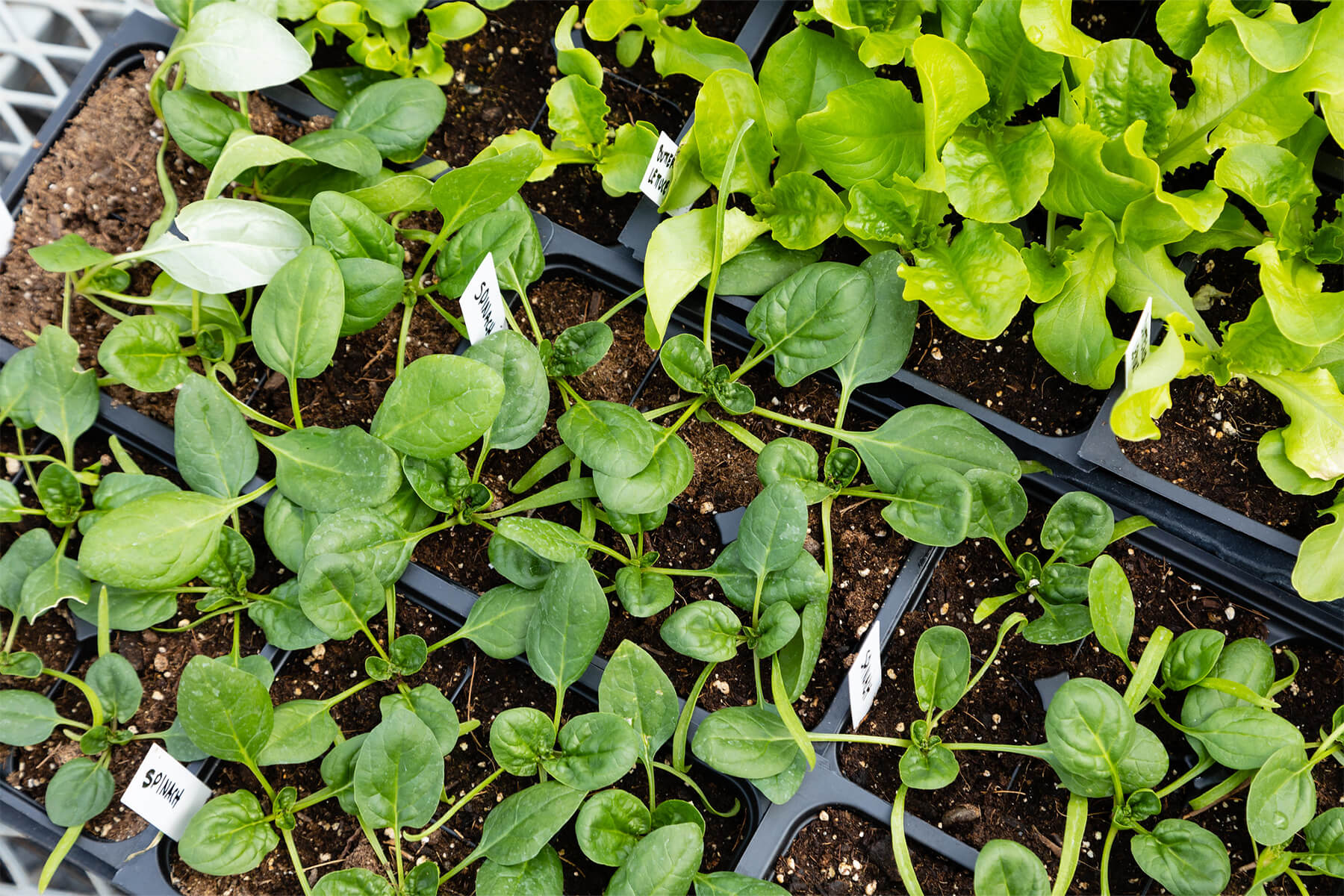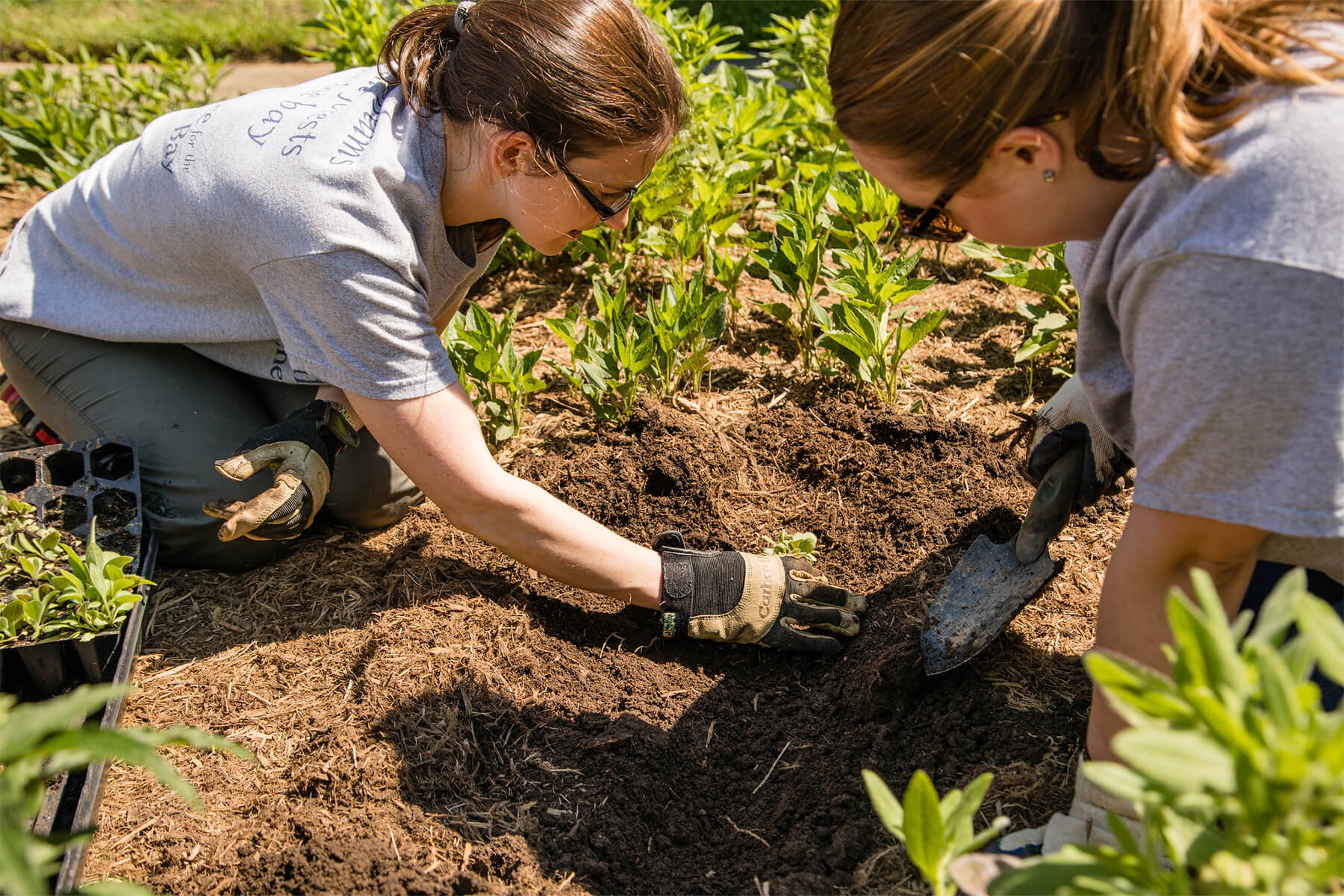How to Choose and Use Native Plants
Planting native plants is an excellent way to increase wildlife habitat and help the Chesapeake Bay. Learn which trees, shrubs and flowers are native and how to choose the best plants for your yard.

An estimated 100 million acres of land in the United States are infested with invasive plants, which crowd out native plant populations and do not serve as hosts to many native insects, birds and other wildlife. Invasive plant infestations are one factor that contributes to the decline of native wildlife populations. One way to help provide habitat for wildlife is to choose and use native plants in your gardens and landscaping.
Native plants are flowers, ferns, trees, shrubs and grasses that have always grown in our region. You will often see native plants growing naturally in forests and roadside meadows and since they’ve always grown here, they are adapted to our soil, climate and pests. This means they don’t need to be watered as heavily or fertilized and sprayed with insecticides like non-native plants that are imported from other parts of the world.
Native plants provide the best source of food (seeds, berries and nectar) for bees, birds, butterflies and other wildlife because these plants and animals evolved together. You’ll likely attract more honeybees, hummingbirds and butterflies to your yard if you plant native species. With a little research and planning you can have a beautiful, flourishing yard that helps wildlife.
Project Time Estimation
A week to research, plan, and plant the native species you desire in your yard; a season (year?) for the plants to grow and mature.
Materials
- Native plant seeds, bulbs or plants
- Gardening soil and compost
- Shovel
- Online resources or books for finding native species
Process Overview
- Assess your yard
- Remove any invasives
- Track sunlight
- Research your native plants
- Buy seeds, bulbs and plants
- Plant!
1. Assess Your Yard
The first step is to know what plants you already have in your yard. Look at which plants are thriving in your yard and which may not be doing as well. If you can’t identify a certain plant, try using apps like iNaturalist where you can use the camera on your phone to identify the plant.
The next step is to assess what type of soil you have in your yard/area that you want to plant in. Just like any other plants, you should choose natives that will thrive in the particular environmental conditions in your yard. That means you need to determine if your yard has sandy, loamy or clay soil. (You’ve tested your soil, right?)
Another benefit of landscaping with native plants is that you don’t have to amend your soil to create a beautiful garden. Don’t worry too much about the type of soil you have in your yard since native plants are adapted to local growing conditions. Most will do just fine in whatever soil exists in your yard—even the heaviest clay or driest sand.
2. Remove Any Invasives
Identify any invasive species that may be growing in your yard. You can take out invasive plant species yourself if the area isn’t too large, but hiring a contractor or invasive species removal specialist company to remove large scale invasive trees and plants can also be an option to help restore your property.
If you want to tackle removing the invasive plants yourself, there are two main types of removal methods with different species responding better to different methods. Mechanical removal is cutting or pulling the roots of the plant. This method is preferred as it has a very limited environmental impact. Some plants have to be bagged and thrown away so they can not reestablish somewhere else in your yard or the environment, while other species can be dried and then composted.
The other method is using a chemical treatment (herbicide) to kill the plant. Some plants have a better response to this type of removal, but herbicides can leach toxins into the area and negatively impact the health of waterways and wildlife around you. Only use this method if it is absolutely necessary. Also, research when the best time of year is to remove these plants. Some invasive plants need to be cut before they seed while others need to be sprayed with an herbicide during a specific time of year.
Complete invasive species removal can take multiple seasons and years, but consistent attention to removing these plants can have huge benefits for native wildlife and the environment around your property.
3. Track Sunlight
To make sure the plants you pick are right for your yard, you want to make sure the proper amount of sunlight is going to be available for your plants. When you have picked out the spot in your yard you want to garden or landscape, monitor how many hours of sunlight the spot receives each day for a few days. Once you know generally how many hours of sun the spot receives, you can get plants that will be appropriate for the area. Most plants will specify how much sunlight is needed or will have one of these four indicators:
- Full sun needs 8 or more hours of sunlight a day
- Partial sun needs about 6 hours of sunlight a day
- Partial shade needs about 4 hours of sunlight a day
- Full shade needs less than 2 hours of direct sunlight a day (not many plants are full shade)
4. Research Your Native Plants
Once you have a cleared space and determine the type of soil and sunlight your yard receives, you can start the fun part of researching native plants that could work on your property!
Some common native flowers are black-eyed Susan, coneflower and wild columbine. Native trees include sweetgum, red maple, Eastern redbud and American holly. But these are just a few of the hundreds of plants that are native to our region.
- The best way to figure out which plants are native is to explore a book or online guide that describes native plants. Here are three excellent resources to help you get started:
- The U.S. Fish & Wildlife Service’s Native Plants for Wildlife Habitat and Conservation Landscaping: Chesapeake Bay Watershed
- The Native Plant Center, an online version of the U.S. Fish & Wildlife Service’s native plant guide
- The Lady Bird Johnson Wildflower Center’s online Plants of Chesapeake Bay collection
There is also an important distinction between naturalized plants and native plants. Naturalized plants, such as Queen Anne’s lace, are not native to our region and spread on their own. Some naturalized plants may actually be invasive, which is bad for your yard and for wildlife.
5. Buy seeds, bulbs and plants

Going to a local nursery is a good first place to start and look for the natives you want to plant, but sometimes it can be difficult to find native plants at many local nurseries. Seeking out a nursery or non-profit organization that specializes in native plants is a good option. The following links list local and online retailers where you can purchase native plants.
- Native Plant Sources – Maryland Native Plant Society
- Pennsylvania Native Plant Sources – Pennsylvania Native Plant Society
- Virginia Native Plant Nurseries – Virginia Native Plant Society
- Native Plants & Sources – West Virginia Department of Natural Resources
Because native plants grow wild in many areas, you may be tempted to collect plants and seeds from a nearby park, meadow or forest. However, we don’t recommend this. You can do more harm than good by walking through fragile natural areas and taking seeds that would otherwise help the plant spread in its native habitat.
6. Plant!

Follow planting instructions for each plant species you’ve chosen for your yard. If you are planting in containers, make sure to have a layer of gravel or broken clay at the bottom of the container and a hole in the bottom of the container for drainage. Plant with a combination of gardening soil and compost if you have it.
If you are planting in the ground, make sure to remove weeds and break up the soil where you are going to put your plant. Once in the ground, covering the area with mulch can help the plants retain moisture. Make sure you water the plant until the soil is damp. For the first 2 weeks, water every day and then water occasionally depending on the climate you are in.
Once your native plants start to grow, mature and bloom they will require less water and maintenance. Also, remember to not use pesticides or herbicides on your native plants. These plants will serve as food and shelter for countless critters!
